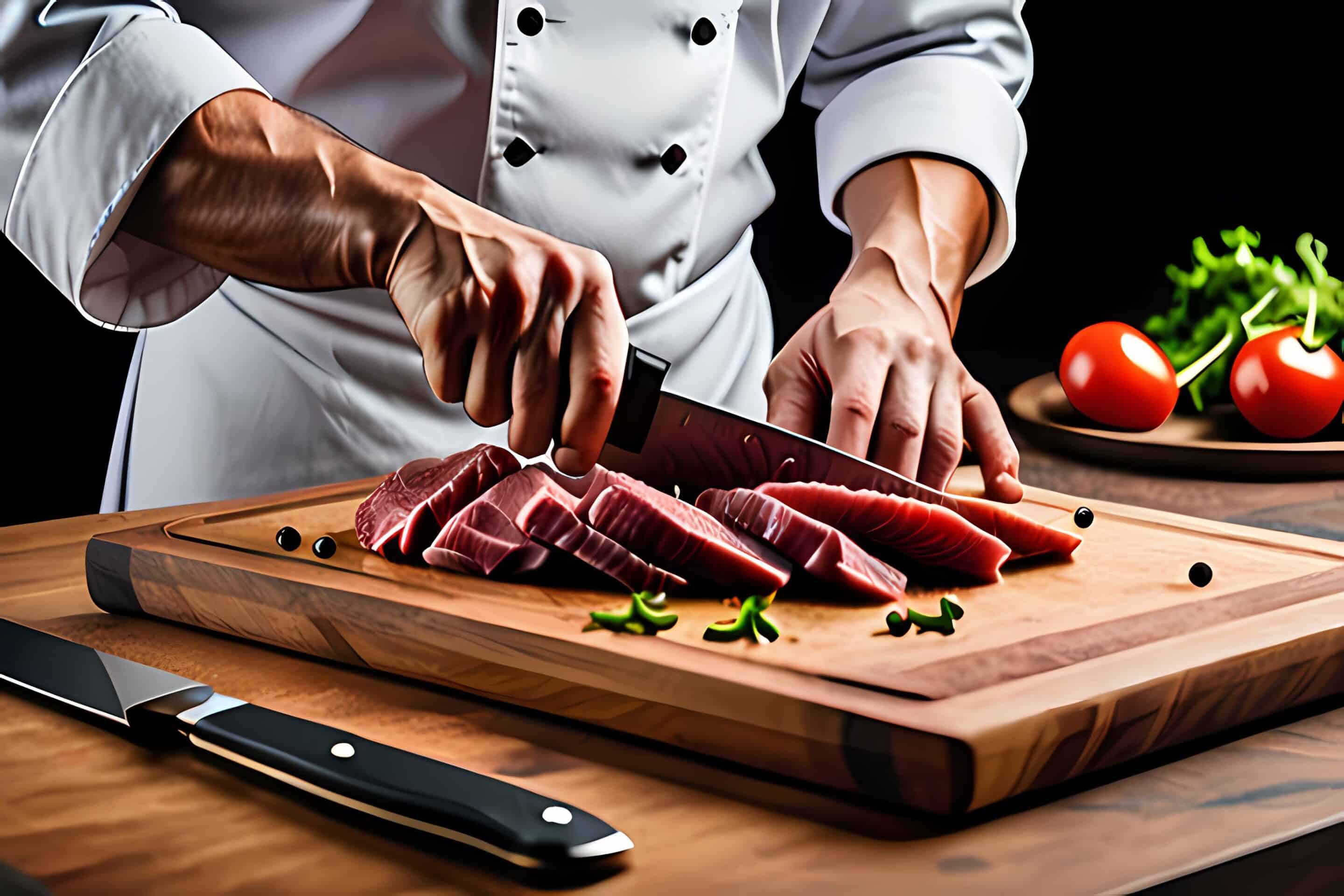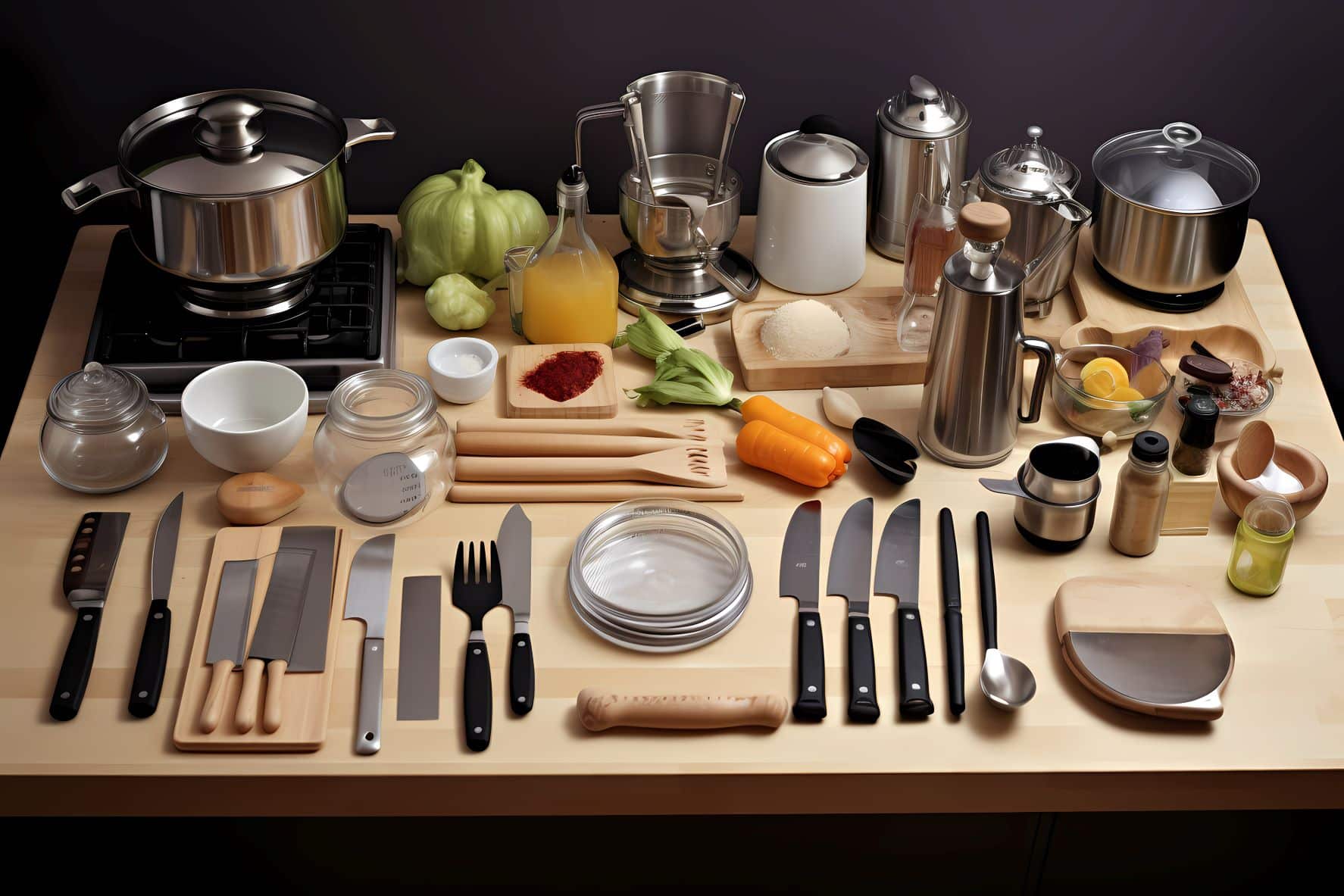Cooking basics for beginners is the foundation for every chef and culinary wizard. Imagine your kitchen as a magical playground. Your kitchen is where you become the alchemist, transforming simple ingredients into delectable masterpieces! Are you ready to embrace the magic, unlock your inner chef, and start your delicious journey with cooking basics for beginners? Let’s dive right in!
Cooking Basics for Beginners: Express Yourself Through Your Dishes
Cooking and food preparation is a canvas where you create a masterpiece filled with flavors, textures, and aromas. You pick the ingredients, choose the spices, and set the mood with the presentation. Want to make something romantic for date night? How about a heartwarming dish that reminds you of grandma? It’s all up to you!
Simple Yet Impactful: The Beauty of Basic Ingredients
For many people tapping into their culinary side, choosing simple dishes that require only a handful of common ingredients is a fantastic way to start. Doing so lets you focus on the basics, master your techniques, and gain the confidence to tackle more elaborate recipes later.
Start With Fresh Ingredients Cooking Basics for Beginners
The secret to any great dish lies in using fresh ingredients. If available, choose locally sourced produce and protein sources. Not only does this support your local community, but you’ll likely notice a remarkable difference in flavor. Fresh ingredients pack a punch full of natural juices, colors, and aromas that make every dish come alive.
Another notable benefit of choosing fresh produce and protein is you reap the benefit of getting maximum nutritional benefits. Peak fresh produce that doesn’t have to travel hundreds or thousands of miles helps reduce your carbon footprint, save the environment, and maintain more minerals and vitamins than its globe-trotting counterpart.

Added Spice Is Nice
Dare to be adventurous with herbs and spices—they’re the secret agents of the culinary world, elevating any dish from good to unforgettable. Consider using an all-seasoning spice with a blend of essentials like garlic powder, onion powder, pepper, and salt as a kitchen staple.
But don’t stop there! Experiment with different herbs and spices to make a dish truly your own. Love heat? Add a dash of cayenne. Are you craving some earthiness? A sprinkle of rosemary could be just what you need.
And remember the humble bay leaf, an often overlooked but genuinely transformative addition to many homemade dishes. Tucked into a pot of simmering soup or stew, a single bay leaf can add a complex layer of subtle and profound flavor.
It imparts an earthy, slightly floral aroma that complements various dishes. Whether you’re making a classic tomato sauce, a pot of chicken curry, or even a batch of white or brown rice, adding a bay leaf or two can take your culinary creation to the next level. Remember to remove the leaf before serving, as its purpose is to infuse flavor during cooking. The bay leaf might be shy, but its impact is anything but!
So go ahead, open that spice drawer, and let your imagination run wild. Each choice you make adds another layer to your culinary masterpiece!
Keep Things Clean and Organized
Nobody likes a messy workspace, especially in the kitchen. A clean countertop and an organized pantry don’t just look good—they make your entire cooking process smoother and more enjoyable.
When your spices are all within reach and your utensils are easy to find, you can focus on what matters: crafting your culinary masterpiece.

But it’s not just about convenience. Proper cleanliness and organization also play a crucial role in food safety.
For instance, cross-contamination can quickly occur if you’re not careful. Imagine chopping vegetables on the same cutting board you used for raw meat—that’s a recipe for foodborne illness, not deliciousness.
Always keep separate cutting boards for meats and vegetables, and wash your hands and utensils between tasks.
Sanitation is vital, too. Regularly clean and sanitize your work surfaces, particularly if preparing raw meat or fish. Doing so can protect you and your family from harmful bacteria and give you peace of mind while cooking.
Invest In Must-Have Kitchen Tools
You’ll need some essential tools before you start cooking up a storm. These basics will make your cooking journey much smoother:
Cutting Board
A solid, sturdy cutting board is your best friend. It provides a flat surface to cut and chop everything from vegetables to gourmet cheeses. Wooden boards are a classic choice, offering durability and a knife-friendly surface perfect for chopping fruits, vegetables, and meat.
Rigid plastic boards are easy to clean and sanitize, making them a good option for foods like raw poultry. If you’re tight on space, consider flexible plastic boards. They’re lightweight and flexible enough to funnel ingredients into your pan or pot.
Each type has advantages, so having a mix in your kitchen can prepare you for culinary success. Choose wisely to elevate your prep game!
Sharp Knives
A good knife or knife set works as an extension of your hand in the kitchen – they are game changers. The right blade can make slicing, dicing, and chopping a breeze.
Stainless steel knives are renowned for their durability and sharpness, ideal for tasks that require precision.
Ceramic knives are another great option; they’re incredibly sharp and won’t rust but are more fragile. Whether you opt for a chef’s knife for versatile cutting or specialized knives like a serrated bread knife or a paring knife for smaller tasks, investing in quality blades can significantly elevate your cooking experience.
Choose wisely; your knives will become your trusty sidekicks in culinary adventures.
Measuring Cups and Spoons
While “eyeballing” ingredients might work for a casual stir-fry or salad, there are culinary moments that call for accuracy. Measuring cups and spoons become essential tools when precision is a must. Think of delicate dishes like soufflés or intricate baked goods: just a little too much salt or an extra splash of milk can be the difference between a heavenly dish and a kitchen disaster.
In such recipes, exact measurements are crucial to activate chemical reactions, balance flavors, and ensure your dish cooks correctly. So, while cooking with whimsy has its place, sometimes it’s essential to stick to the script—and that’s where measuring cups and spoons come in.
Mixing Bowls
Mixing bowls may seem basic, but they’re indispensable for a well-functioning kitchen. The material of your bowl can make a difference, too. Glass bowls are non-reactive and microwave-safe, ideal for mixing acidic ingredients like tomatoes or marinating meats.
Plastic bowls are lightweight and durable, great for everyday tasks like tossing salads or whisking eggs.
Metal bowls are perfect for cold tasks. Chill them in advance for whipping cream or preparing cold pasta salads. Each type has unique benefits, and having various mixing bowls ensures you’re well-prepared for any culinary challenge. Choose your bowls wisely, and they’ll simplify your cooking!
Upgrade Your Arsenal: Advanced Tools
Are you feeling confident in the kitchen? Once you’ve mastered the basics, a world of advanced tools awaits you to take your culinary skills to the next level. Each gadget offers a unique way to expand your repertoire and make your kitchen endeavors more efficient and enjoyable.
Air Fryers: If you’re health-conscious but still crave the crunch of fried foods, an air fryer is your new best friend. Get the crispy texture without the oil, making dishes like fries or chicken wings less of a guilty pleasure.
Electric Mixers: For aspiring bakers, an electric mixer is almost necessary. Say goodbye to sore arms and inconsistent batter. With various attachments and speeds, this tool can help you whip up everything from meringues to doughs effortlessly.
Countertop Cookers: Devices like Instant Pots are versatile wonders. These multi-functional cookers can pressure cook, slow cook, steam, and sauté in one compact machine. It’s like having an extra set of hands in the kitchen, making meal prep faster and more efficient.
Blenders and Food Processors: These powerful machines can do everything: Smoothies, sauces, or soups. They reduce prep time and offer a convenient way to blend, chop, or purée.
Sous-vide Machines: If precision is your thing, a sous-vide machine allows you to cook foods to the exact temperature, ensuring a perfect result every time. Ideal for meats and delicate proteins, this device is a favorite of many top chefs.
Investing in these advanced tools isn’t just about making life easier; it’s about unlocking new possibilities in your kitchen.
Cookbook Inspiration – Cooking Basics for Beginners
Traditional cookbooks offer tried-and-true classics, often with expert tips and techniques to help you master a dish. Online recipes bring a world of options right to your fingertips—whether you’re looking for a quick 30-minute meal or diving into the cuisine of a foreign culture, there’s a blog or website that’s got you covered.
For the eco-conscious cook, plenty of no-waste recipes focus on using every part of an ingredient. These help you reduce waste and introduce you to flavors and textures you might not have explored otherwise.
Whether a hardcover cookbook, a digital recipe blog, or a zero-waste cooking guide, each source provides a different perspective and new learning skills. So broaden your culinary horizons and cook up something exciting and delicious!
Your Kitchen, Your Rules
As you step into your kitchen, remember—it’s a space where you can experiment, learn, and, most importantly, express yourself. There’s no ‘right’ or ‘wrong’ here. You’re the chef, the artist, and the adventurer all rolled into one. So, what are you waiting for? Unlock your inner chef today and let the magic happen!
Updated 1/7/2024





